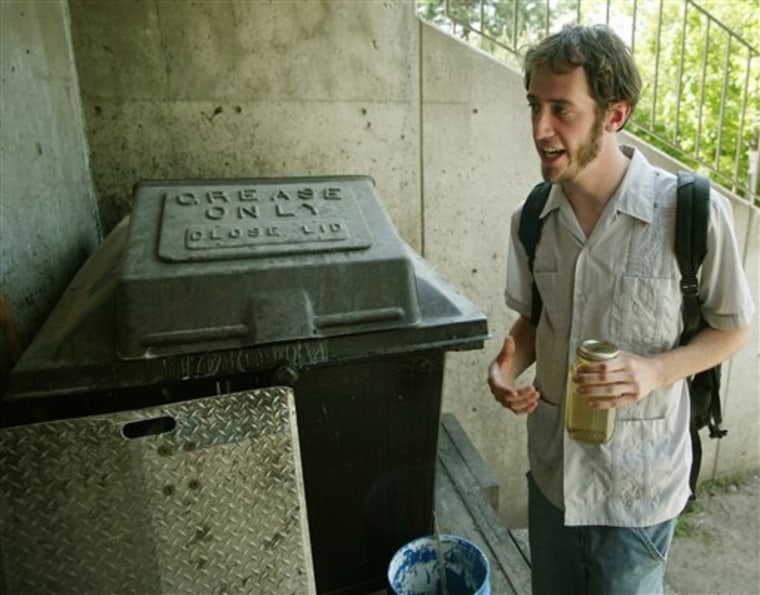In the shadow of Carleton College’s majestic wind turbine, Daniel Pulver has cooked up an idea for creating even more renewable energy: turning used cafeteria oil into fuel for cars.
Across the Cannon River at St. Olaf College, Dayna Burtness grows pesticide-free food for the school cafeteria. Wasted food goes to a composter so it can be used in the campus’ fields and planting beds.
Carleton and St. Olaf are among hundreds of colleges and universities across the country trying to be more self-sustaining to stretch budgets and conserve energy.
But the green-mindedness is also spurring old-time school rivalries like the friendly competition between the two schools in Northfield, a rural town of 18,000 people roughly 40 miles south of the Twin Cities.
“The vision ... is to make sustainability the foundation of everything we do for education,” said Jen Everett, an assistant philosophy professor at Carleton who teaches an environmental ethics class. “We need to graduate students who are going to be radically different kinds of thinkers than we were trained to be.”
Efforts elsewhere
More than 600 schools in the United States and Canada have sustainability efforts under way, said Judy Walton, executive director of the Association for the Advancement of Sustainability in Higher Education.
“We all feel now that the field is really exploding,” Walton said.
Oberlin College in Ohio monitors electricity and water use in dormitories, and students will eventually be able to track their dorms’ use.
Cochise College in Douglas, Ariz., recently broke ground on a new solar field that is expected to save $15,000 annually in heating and cooling costs.
And at Smith College, in Northampton, Mass., a $5.7 million co-generation plant is expected to save $870,000 in fossil fuels and electricity. The project includes one generator to produce electricity and another to capture heat that’s normally wasted.
Comparing ideas
The 5,000 students attending St. Olaf and Carleton have the advantage of living close enough to each other to compare notes.
Carleton began operating a 1.65-megawatt wind turbine in 2004, and St. Olaf is building one of similar size this summer — though plans were in the works even before Carleton’s began operating.
Carleton’s turbine is “basically a break-even operation” because it sells electricity to a utility company, buying back what it needs, said Fred Rogers, Carleton’s vice president and treasurer. The turbine can produce the equivalent of about 40 percent of the school’s electricity.
St. Olaf’s wind turbine, which covers about a third of its needs, is expected to save as much as $300,000 a year, said Pete Sandberg, St. Olaf’s assistant vice president for facilities.
Sandberg said that while Carleton may be ahead on wind energy, St. Olaf leads in composting. The school’s composter, in use since the fall, keeps 3.5 tons of weekly food waste from the area’s landfills.
This month, faculty from Carleton and St. Olaf will hold a joint workshop to learn how to incorporate sustainability ideas into their classrooms.
Jim Farrell, who teaches environmental studies at St. Olaf and is co-leading the workshop, said students are already using their own campuses as laboratories.
Pulver, a 21-year-old Carleton senior, wants to convert the 1,000 gallons of vegetable oil the school throws away annually into biodiesel fuel for on-campus vehicles.
From kitchen to campus?
He got the idea in Everett’s class and started mixing biodiesel in his kitchen. Pulver will pitch the concept to a school planning committee and plans to hand the project off to another student when he graduates.
Burtness, also 21, said a summer internship at an organic farm in Wisconsin inspired her to work with St. Olaf administrators to set up a campus farm last year.
Officials were cool to the idea until the company that runs the school cafeteria said it would buy the produce. It has since bought more than $10,000 worth.
“In higher education, I think a big problem is that students end up thinking it’s too cerebral,” Burtness said. “The existence of on-campus, real solutions that students can actually get involved with — I think that’s really empowering.”
